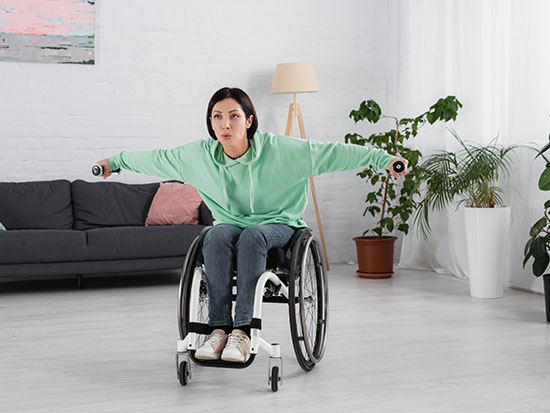 Rachel Cowan, Ph.D., associate professor at the University of Alabama at BirminghamDepartment of Physical Medicine and Rehabilitation and program co-director for UAB’s Spinal Cord Injury Model System, was awarded $1.6 million from the U.S. Army Medical Research and Development Command to study the impact of fitness on quality of life after spinal cord injury.
Rachel Cowan, Ph.D., associate professor at the University of Alabama at BirminghamDepartment of Physical Medicine and Rehabilitation and program co-director for UAB’s Spinal Cord Injury Model System, was awarded $1.6 million from the U.S. Army Medical Research and Development Command to study the impact of fitness on quality of life after spinal cord injury.
People with spinal cord injury (SCI) report participating in activities, mobility and personal care independence as major factors of quality of life (QOL), regardless of how severe their injury is. Transfers are particularly important to independence. In fact, people with SCI rate transferring from wheelchair to car, wheelchair to wheelchair, and ground to wheelchair transfers among the top seven factors essential to daily life.
“Researchers often focus on achieving any change, even if it isn’t of value to the person,” Dr. Cowan explains. “We want to know what changes are meaningful to people with SCI so we can design studies and clinical intervention that target those changes. We know from previous research that fitness is a key factor in a person’s ability to perform transfers, which suggests fitness is one of the key factors in QOL “What we hope to learn from this study is what fitness levels people actually need to gain meaningful benefits in their QOL,” says Cowan.
This study is looking to meet three specific goals. First, the study will identify what self-care, mobility, and transfer independence changes are meaningful to people with SCI, can be measured by existing research tools, and could be achieved by increasing fitness.
Second the study will determine if a calculator to estimate fitness that was created using information about men with paraplegia works in men with tetraplegia and women with tetra or paraplegia.
“This calculator was developed through our previous research and makes it easy to gather information,” Cowan adds. “However, it is very important that we find out if the calculator works well when use for different groups and by different people. The more times it works well, the more it can be trusted and used. Our long term goal is for this calculator to be used by clinicians and people with SCI, not just researchers.”
The final goal utilizes the information from the first two goals to design a research study to test if an exercise intervention that increases fitness can offer meaningful improvement in self-care, mobility, and transfer independence.
“Research is expensive and time consuming. Although the link between fitness and independence is obvious to anyone with a SCI, linking changes in fitness to changes in independence is challenging. What we learn from the first two goals, combined with the information from our earlier research, will mean that the next study will be more likely to succeed,” Cowan states.
The 3-year project is part of the U.S. Army Medical Research and Development Command targeted military research in clinical and rehabilitative medicine.